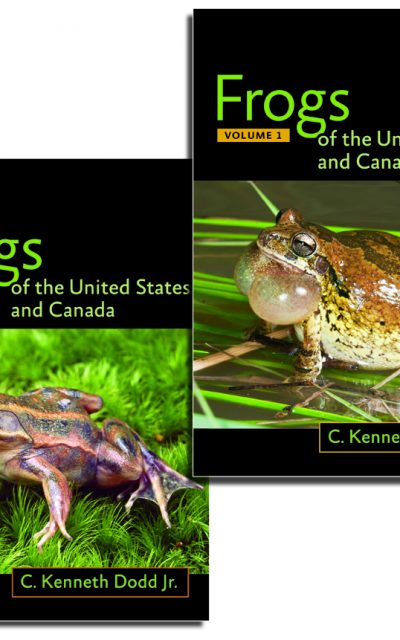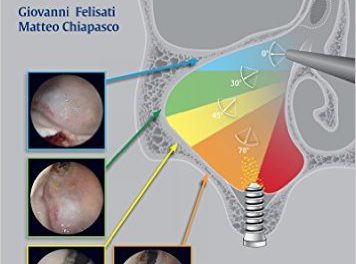 Author: C. Kenneth Dodd Jr.
Author: C. Kenneth Dodd Jr.
Publisher: Johns Hopkins University Press – 1,032 pages
This book was brought to publication with the generous support of the U.S. Geological Survey’s Amphibian Research and Monitoring Initiative, the Center for Biological Diversity, and the Herpetologists’ League.
Book Review by: Deekay Daulat
An extensive study of 106 species of frogs is contained in this well-researched two-volume text, with color and black-and-white photographs, and information on:
- Conservation and management
- Diseases, parasites, and threats from toxic substances
- Landscape ecology and evolution
- Life history and demography
- Past and present distribution
- Reproduction and diet
These frogs in North America can be found in many different regions and terrain. You will find them in areas ranging from the Florida Keys to the Rocky Mountains. Being extremely adaptable to different temperatures, they live in alpine-tundra habitants, arid plains, deserts, grassland prairies, high tundra, humid southeastern forests, tropical lowlands and even the Arctic Ocean.
These were originally thought to be freshwater frogs and tadpoles, but some were found in saltwater areas near oceans and in isolated desert wetlands.
The 106 species of frogs in the United States and Canada featured in the two volumes of this book consist of 16 families, with eight families and 64 species in Volume 1; and another eight families and 42 species in Volume 2.
Volume 1 provides you information on these eight families of frogs: Ascaphidae, Bufonidae, Craugastoridae, Eleutherodactylidae, Hylidae, Leptodactylidae, Microhylidae, and Rhinophrynidae.
Volume 2 enlightens you on details about these eight families, with the scientific names in italics and other biological names not italicized: Dendrobates auratus, Eleutherodactylus coqui, Eleutherodactylus planirostris, Glandirana rugosa, Ostreopilus septentrionalis, Xenopus laevis, Ranidae, and Scaphiopodidae.
This book lists species alphabetically under each family in the Contents section, so you can turn to the page that covers each species, based on the items of information we list below.
The Introduction provides basic a background on amphibians and a section at the end entitled For Further Information has lists of reference sources, including books, Internet sites, herpetological atlases, sound recordings (so you can listen to what particular frogs sound like), and professional herpetological societies in North America.
Each family of frogs is covered in a separate chapter of its own. For example, the first family – Ascaphidae – is covered in the first chapter, with the species – Ascaphus montanus – as the first species to be featured in this chapter. The common name for this species of frog is the Rocky Mountain Tailed Frog.
For each species of frog featured in this book, the following items of information are provided for your use, in this order:
- Etymology
- Nomenclature
- Identification
- Distribution
- Fossil Record
- Systematics and Geographic Variation
- Adult Habitat
- Terrestrial and Aquatic Ecology
- Calling Activity and Mate Selection
- Breeding Sites
- Reproduction
- Larval Ecology
- Diet
- Predation and Defense
- Population and Biology
- Diseases, Parasites and Malformations
- Susceptibility to Potential Stressors
- Status and Conservation
This book is useful not just for biology teachers and researchers but also for wildlife managers and others involved in conservation. It is really a very useful reference source, a sort of a mini encyclopedia on frogs.
The author warns that many frog populations are declining and some are altogether disappearing. This book provides accurate, comprehensive, and up-to-date information on all species, including endangered ones. The information covers behavior, biology, developmental malformations, disease, and much else. This is really an excellent book and we congratulate the author C. Kenneth Dodd Jr. on a job well done!
C. Kenneth Dodd Jr. is a courtesy professor in the Department of Wildlife Ecology and Conservation, University of Florida, and is a former president of the Herpetologists’ League. He is the author of The Amphibians of Great Smoky Mountains National Park.







